Six sustainability trends to watch in 2022
by Emily Saunders
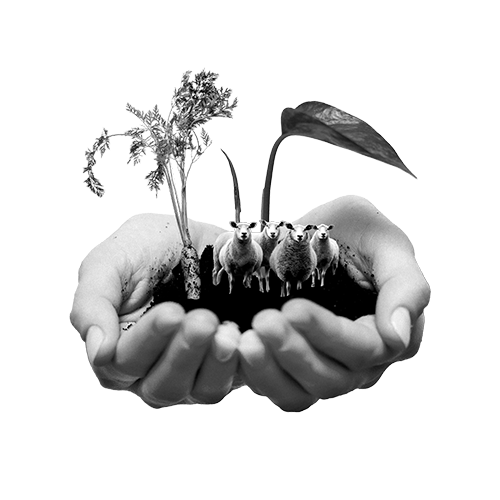



For anyone that picked ‘calm’ as their 2022 theme, January certainly said ‘hold my drink’.
Surging COVID cases, a tsunami in the Pacific, major flooding in SA, and Australia’s hottest day in recorded history. Regardless, we’ve chosen the theme ‘optimistic’.
In 2021 we worked with future-focused clients from FMCG, healthcare, utilities, telecoms and the built environment. And from what we’re seeing, as sustainability shifts further into the mainstream, consumers and investors are more clued in than ever.
It’s never been more important for brands to have their finger on the pulse, and finding fresh ways to innovate for the better. To help you stay in the loop, Republic’s Strategy team have put together their top six sustainability predictions for 2022.
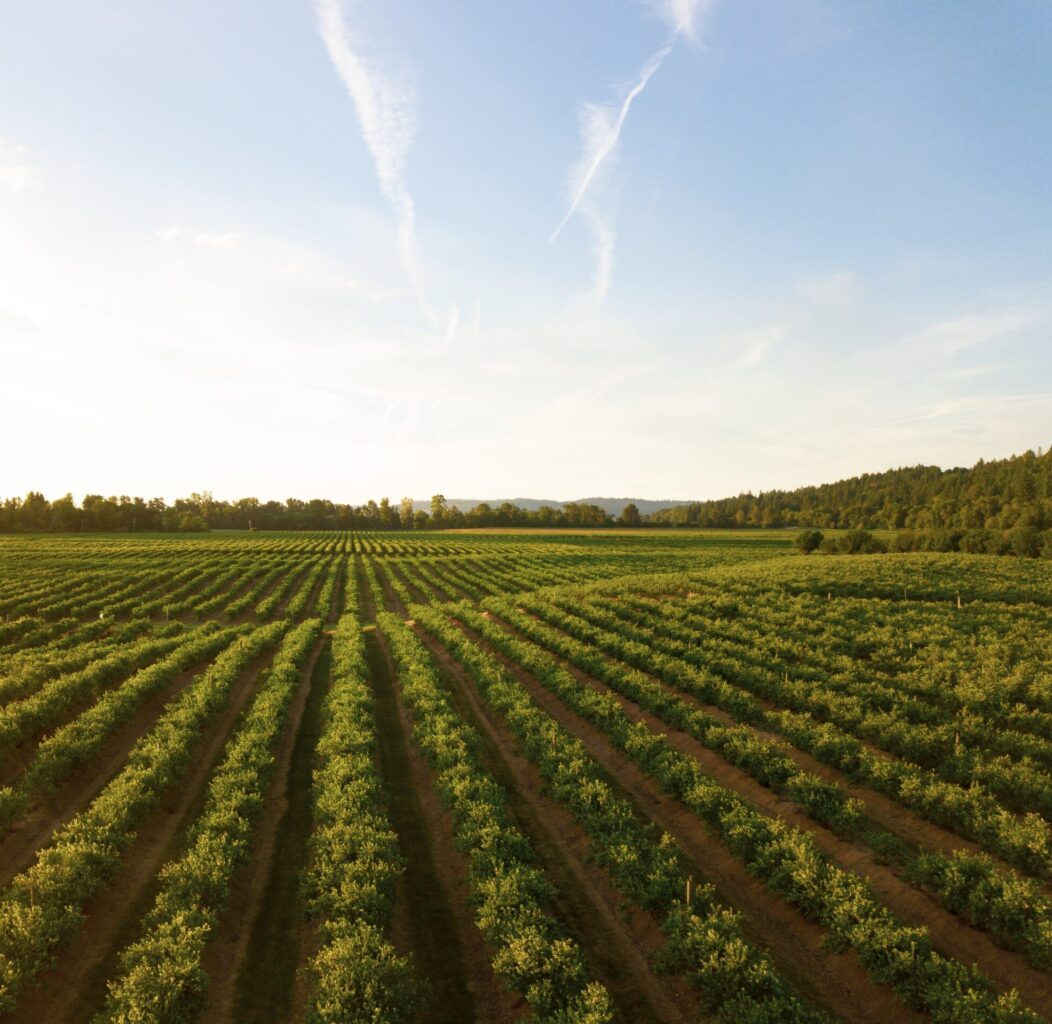
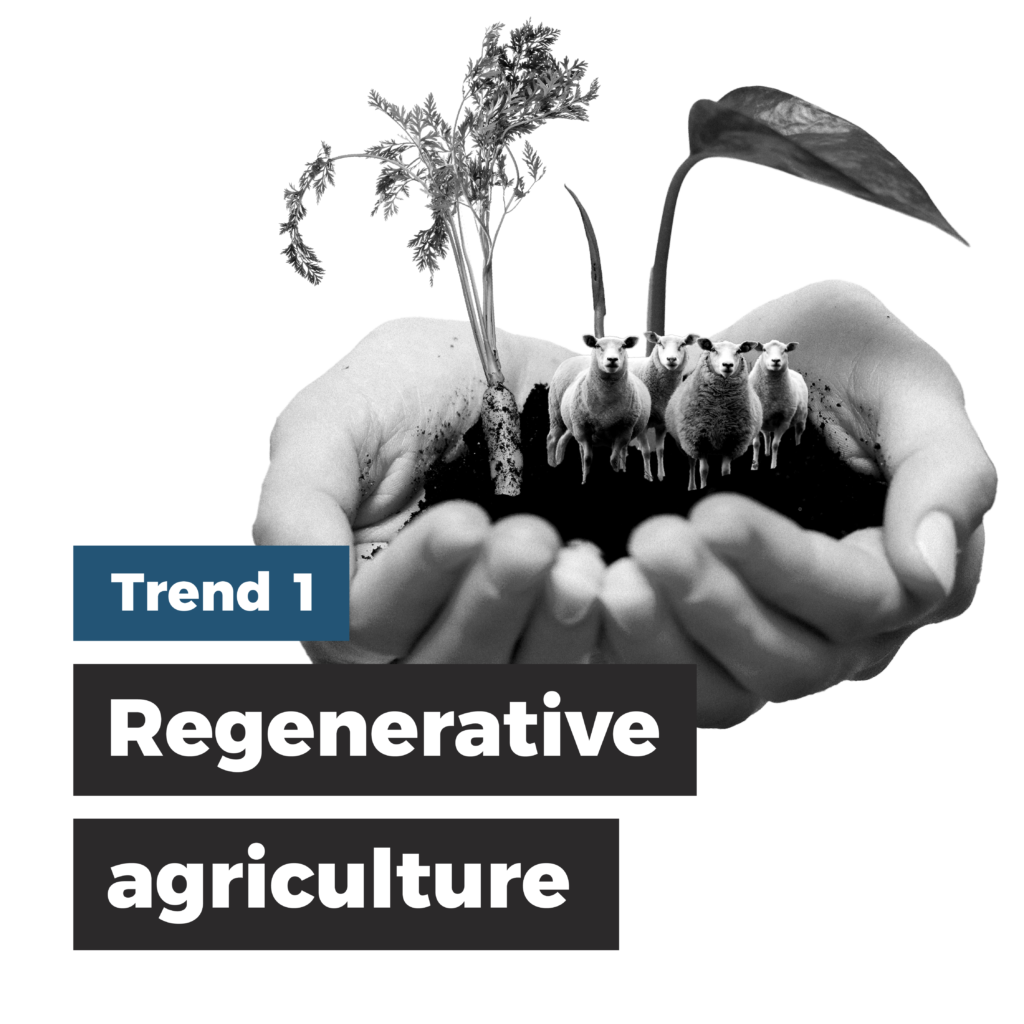
It’s time to roll up your sleeves – nobody said saving the planet would be clean work!
Helped to stardom by the Netflix documentary Kiss The Ground, regenerative agriculture is being talked about by everyone from farmers to actors, politicians and Fortune 500 CEOs.
Regenerative agriculture is a system of farming that focuses on restoring soil quality through techniques like composting, rotational gardening and optimising landscape design. Healthy soil is carbon-loaded soil – which is why carbon sequestration makes up a big slice of the government’s net zero by 2050 plan.
The government isn’t the only one that thinks it’s a good idea: General Mills has committed to a million acres of farmland managed through regenerative agriculture; PepsiCo is aiming for 7 million acres by 2030; and Walmart has committed to 50 million acres.
In Australia the movement is still small, but growing. In fact, right now Woolworths is working on a study on the potential of adopting regenerative farming practices in their supply chain – so watch this space.
Our prediction: this year we’ll be seeing war being waged on supermarket shelves for conscious consumers’ hearts and minds, as food and beverage businesses set bold regenerative agriculture goals for their products and supply chains – and educating their customers about their impact along the way.
And as product ranges grow we expect to see them race to label them as such, with verifications such as the Land to Market tick of approval.
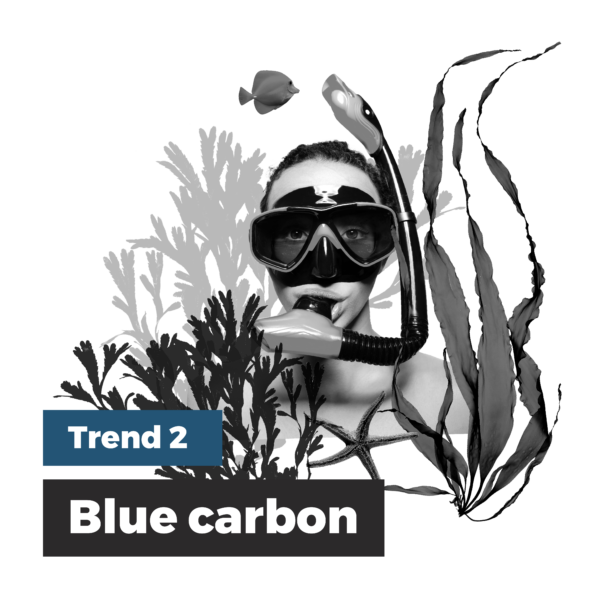
When we think of carbon sequestration, we usually think of ancient Amazonian rainforests.
But in 2022 we’re expecting the conversation to shift to their underwater counterparts: mangroves, seagrasses, salt marshes and wetlands.
They might be muddier and smellier, but blue carbon ecosystems sequester and store up to 4 times more carbon – and for longer – than land-based forests. That’s because they draw and store carbon deep below the earth’s surface where it can remain for millennia.
The good news is that blue carbon ecosystems and ocean biodiversity are starting to get some recognition. In 2021 the Australian Government announced a $100 million investment for their protection and is partnering with our Pacific neighbours to improve blue carbon management.
We’re also seeing brands step up to the plate. In 2018, Apple moved to protect a 27,000 acre mangrove forest in Columbia to sequester a million metric tons of carbon dioxide, and Carlsberg have recently partnered with WWF to restore seagrass meadows in the UK.
Our prediction: unfortunately blue carbon ecosystems are some of the most threatened in the world due to coastal development, farming and pollution – and when destroyed, they emit all that centuries-old carbon up into the atmosphere.
Australia has one of the largest blue carbon ecosystems in the world, so we’re expecting to see a greater focus on brands protecting these areas and the take-off of blue carbon offsetting.
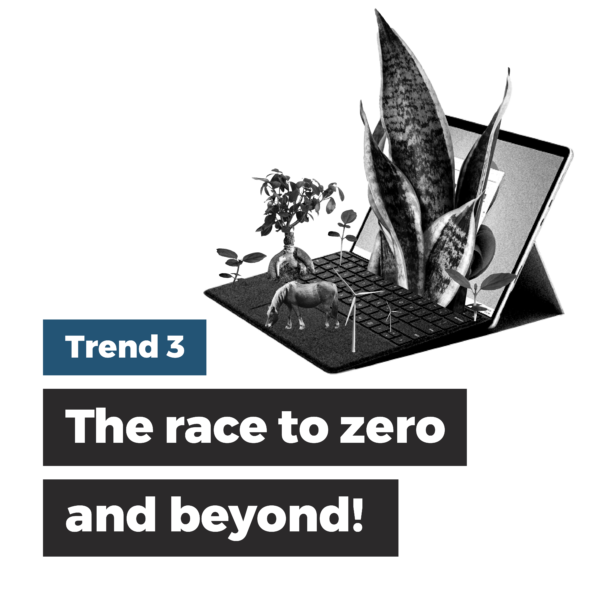
Carbon neutral is rapidly becoming an outdated concept.
Customers and investors expect to not just see carbon offsetting, but energy reduction and behaviour change. The crowded race for net zero also means more companies are looking for ‘what’s next?’ – and that might just be net positive.
Net positive targets mean having a restorative or regenerative impact on the environment, not just minimising and offsetting any harm caused. And we’re not just talking carbon – net positive can refer to other resources like nature or water, too.
In 2020, Microsoft rocked the sustainability world announcing they will not only remove more carbon from the atmosphere than they produce by 2030, but all the carbon they’ve emitted since founding in 1975 by 2050.
That means that if you’ve ever used a Microsoft product (and who hasn’t?), the climate impact of all those spreadsheets by 2050 will be zero.
In 2014, Mirvac was one of the first companies to set a net positive carbon target for 2030, but reached it nine years early in 2021. And then we have Kingfisher, one of the largest home improvement retailers in the world for whom 40% of their products are timber, committing to be forest positive by 2025.
Our prediction: move over net zero – in 2022, net positive targets that commit to restoration and regeneration might just be the new normal.
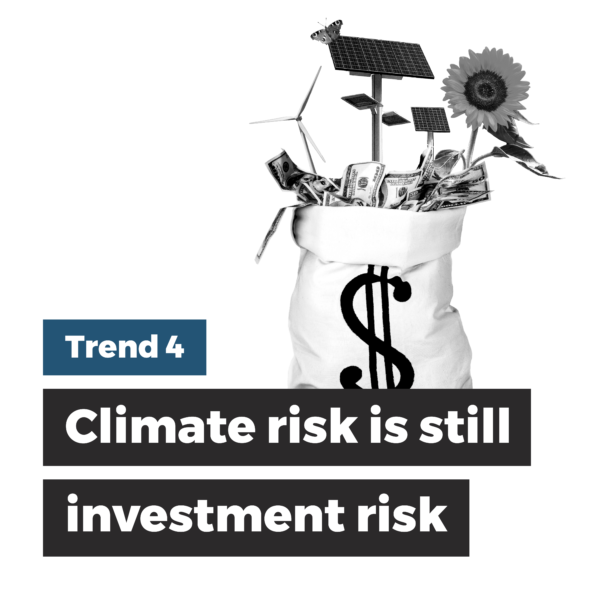
Remember when Larry Fink claimed in his 2020 letter to CEOs that, climate risk is investment risk?
Or in 2021, when the Secretary-General called the latest IPCC Climate Report a code red for humanity?
Following these hot takes, companies scrambled to set up net zero targets for fear of investor backlash. But this year, those investors are going to be asking for receipts – so companies better have an actual plan to get there!
In that letter, Larry noted how the climate transition presents a historic investment opportunity. And he was right on the money – green financing, impact investing, ESG and sustainability have indeed moved out of the fringes and into the mainstream.
But because of the quick shift, stricter ESG requirements are presenting implementation challenges and legal risks. Transparent disclosure is now critical for investors to understand whether a company is on the right track. This means sharing climate risks, setting clear goals and targets, and reporting on progress made.
Our prediction: in 2020, New Zealand was the first country to announce mandatory climate risk reporting in line with the Task Force for Climate-Related Financial Disclosures (TCFD). Major investor groups in Australia are now pushing for the same, so it’s likely a matter of when, not if the same happens here.
We’re expecting to see greater rigour and expectations this year from Boards and investors, and hopefully mandated climate-risk reporting here in Australia. For companies that have been cruising on greenwashing – they should consider themselves on notice!

As corporates kick their net zero plans into gear, investors are now turning their eyes to biodiversity loss as the next material risk to the global financial system.
And it’s no wonder: more than half of the world’s economic output is dependant on nature. At the same time, a million species are at risk of extinction, and biodiversity around the world is declining faster than at any other time in human history.
The world’s businesses are taking notice, with 1,000+ including Unilever, PepsiCo, Tesco, H&M, Microsoft and Google signing Business For Nature’s call for world leaders to not just halt, but reverse nature loss.
2021 also saw the launch of the Taskforce on Nature-related Financial Disclosures, showing us just how focused investors are on nature-related risks and opportunities.
It only takes a quick glance at Microsoft’s sustainability targets to see that like climate, biodiversity is everyone’s responsibility. They’ve committed to protect more land than they use by 2025, as well as leveraging their technology to better understand the natural world.
Our prediction: this year we’re expecting an increased focus on nature and biodiversity within corporate sustainability strategies, with first movers aligning with the TNFD.
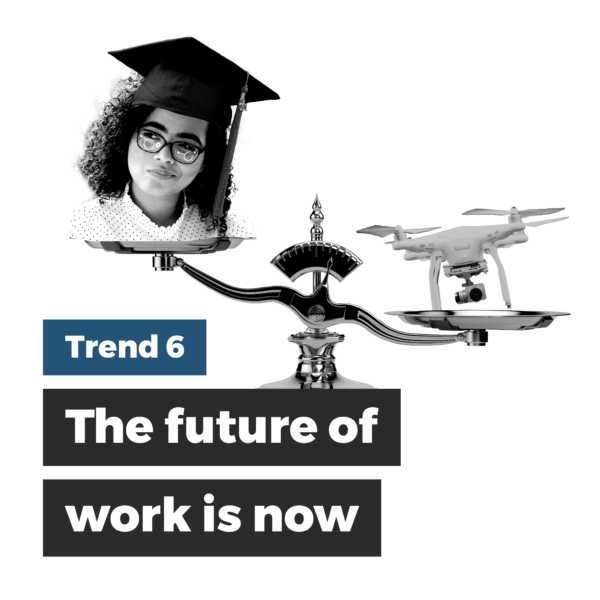
If the future of work was a hot topic pre-pandemic, it’s on fire now.
With these unprecedented times turning everything about the way we work on its head, what exactly does the future of work look like?
Well, nobody really knows for sure – but it’s not all robots and billionaires running businesses from space. The future of work will hinge on figuring our what employees want and need, and what skills are required for the jobs that haven’t even been created yet in a rapidly evolving world.
Along with specialised skills, the World Economic Forum’s Future of Jobs Report 2020 identified analytical thinking and innovation as the top emerging skill for jobs in Australia by 2024.
What we’re seeing is that in practice, this is a balancing act. The future of work requires employees’ to be thinking about continuous learning, evolution and adaptation. Equally, employers need to be offering initiatives and educational programs to help their employees to learn, grow and evolve.
Our prediction: to continue attracting and retaining top talent, companies will need to keep the needs, desires and ambitions of employees front of mind, and at a minimum meet – if not exceed – the benchmarks set by their competitors.
No one is going to escape this one – all companies will have to adapt to keep up with cracking pace the market is setting. The real question is, is your company ready for the future of work?
Republic of Everyone are brand purpose and sustainability specialists, and keen to work with movers and shakers seeking to innovate their businesses to create genuine positive impact.
Don’t be shy, introduce yourself! Reach us at hello@republicofeveryone.com